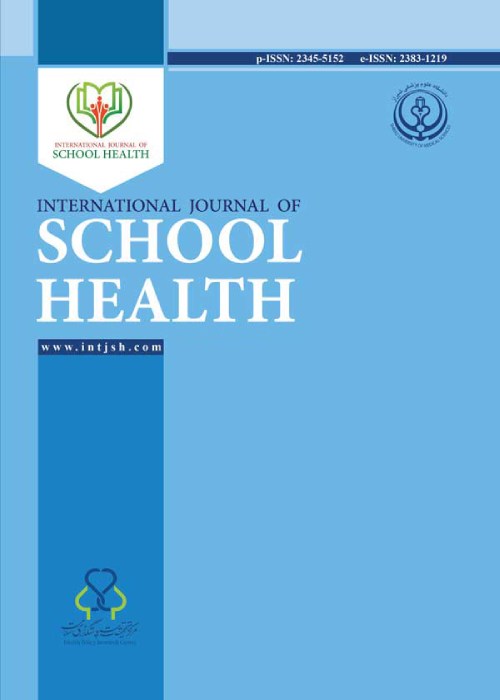The Effect of Thermal Comfort on Stress in Female High School Students
Author(s):
Article Type:
Research/Original Article (دارای رتبه معتبر)
Abstract:
Background
Indoor environment, in which we are located, influences our psychological responses, like stress. Thermal comfort is one of the most important factors determining the quality of indoor environment, obtained by calculating predicted mean vote (PMV) and predicted percentage of dissatisfaction (PPD) in a steady-state approach. Several studies revealed that hot or cold temperature (°C) could increase stress. However, other climatic thermal comfort factors like relative humidity (%) and air velocity (m/s) have not been well researched in this regard.Objectives
The purpose of this study was to investigate the immediate effects of undesirable thermal comfort on stress by measuring salivary alpha-amylase levels (sAA) in female high school students.Methods
The present study was conducted in a semi-experimental design with pre-test and post-test and control group. The sample size was 390 female high school students, who were selected by multi-stage cluster random sampling, during years 2016 and 2017, in Shiraz, Iran. Students were divided to intervention and control groups. In the intervention group, thermal comfort was interfered by changing temperature, relative humidity, and air velocity for two hours. Saliva was collected by Cocorometers strip and sAA was measured by a hand-held device, Cocorometer (Nipro Co, Osaka, Japan). The pre-test and post-test were compared with each other. Thermal comfort in classrooms was measured by a steady-state model, PMV/PPD index, and data was analyzed by Analysis of Covariance (ANCOVA).Results
Interfering in temperatures and humidity at an average of 4.8°C and 36% for two hours in the intervention group caused thermal comfort to be in an unfavorable range (PMV > .5) and dissatisfaction was more than desirable (PPD > 10%). In the intervention group, when the intervention took place at the temperature, relative humidity, air velocity, and the synchronous effect of these three variables (TRHAV), the mean sAA was 43.57, 42.74, 44.23, and 45.93 (KU/L) in the pre-test and 55.91, 52.35, 44.89 and 61.99 (KU/L) in the post-test. Also, in the control group, the mean sAA was 44.73, 47.03, 43.38, and 44.36 (KU/L) in pre-test and 44.04, 47.19, 43.83, and 43.77 (KU/L) in the post-test. The sAA was significantly increased in the intervention group when thermal comfort and its climatic variables, including temperature (P Conclusions
Undesirable thermal comfort increased stress in female high school students. Stress was affected by temperature, relative humidity and the synchronous effect of temperature, relative humidity, and air velocity yet not air velocity, individually. Keywords:
Language:
English
Published:
International Journal of School Health, Volume:5 Issue: 3, Summer 2018
Page:
5
magiran.com/p1845234
دانلود و مطالعه متن این مقاله با یکی از روشهای زیر امکان پذیر است:
اشتراک شخصی
با عضویت و پرداخت آنلاین حق اشتراک یکساله به مبلغ 1,390,000ريال میتوانید 70 عنوان مطلب دانلود کنید!
اشتراک سازمانی
به کتابخانه دانشگاه یا محل کار خود پیشنهاد کنید تا اشتراک سازمانی این پایگاه را برای دسترسی نامحدود همه کاربران به متن مطالب تهیه نمایند!
توجه!
- حق عضویت دریافتی صرف حمایت از نشریات عضو و نگهداری، تکمیل و توسعه مگیران میشود.
- پرداخت حق اشتراک و دانلود مقالات اجازه بازنشر آن در سایر رسانههای چاپی و دیجیتال را به کاربر نمیدهد.
In order to view content subscription is required
Personal subscription
Subscribe magiran.com for 70 € euros via PayPal and download 70 articles during a year.
Organization subscription
Please contact us to subscribe your university or library for unlimited access!


